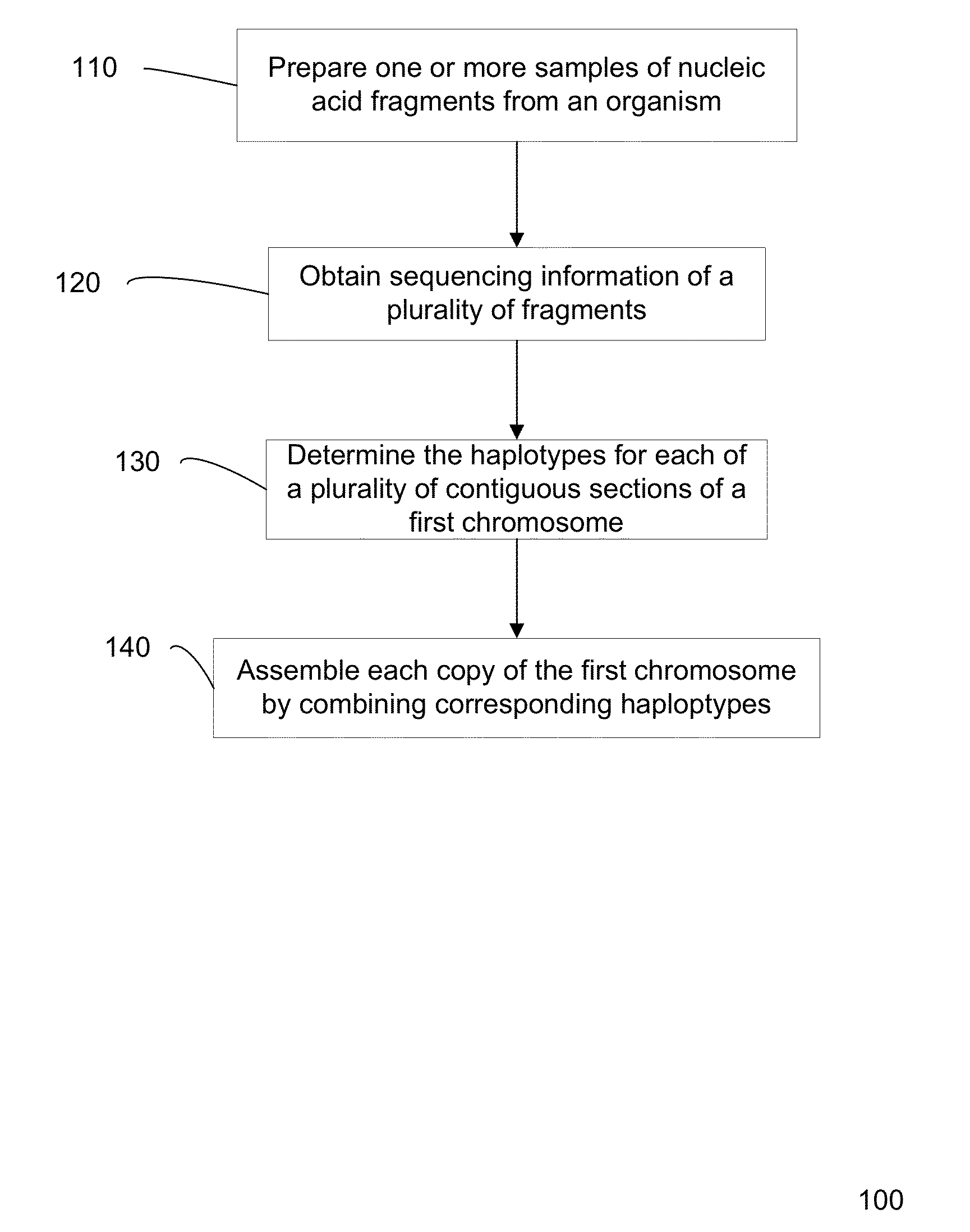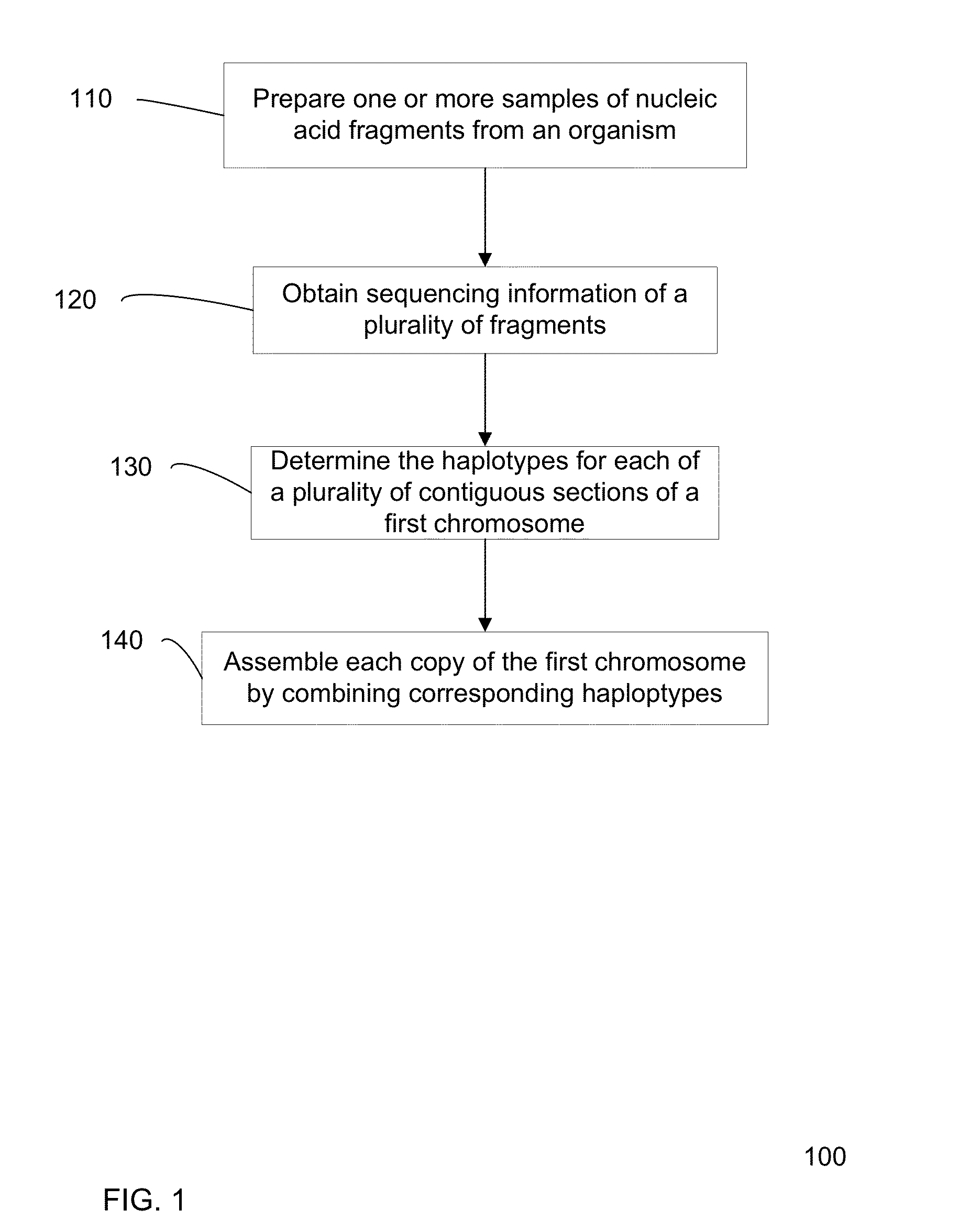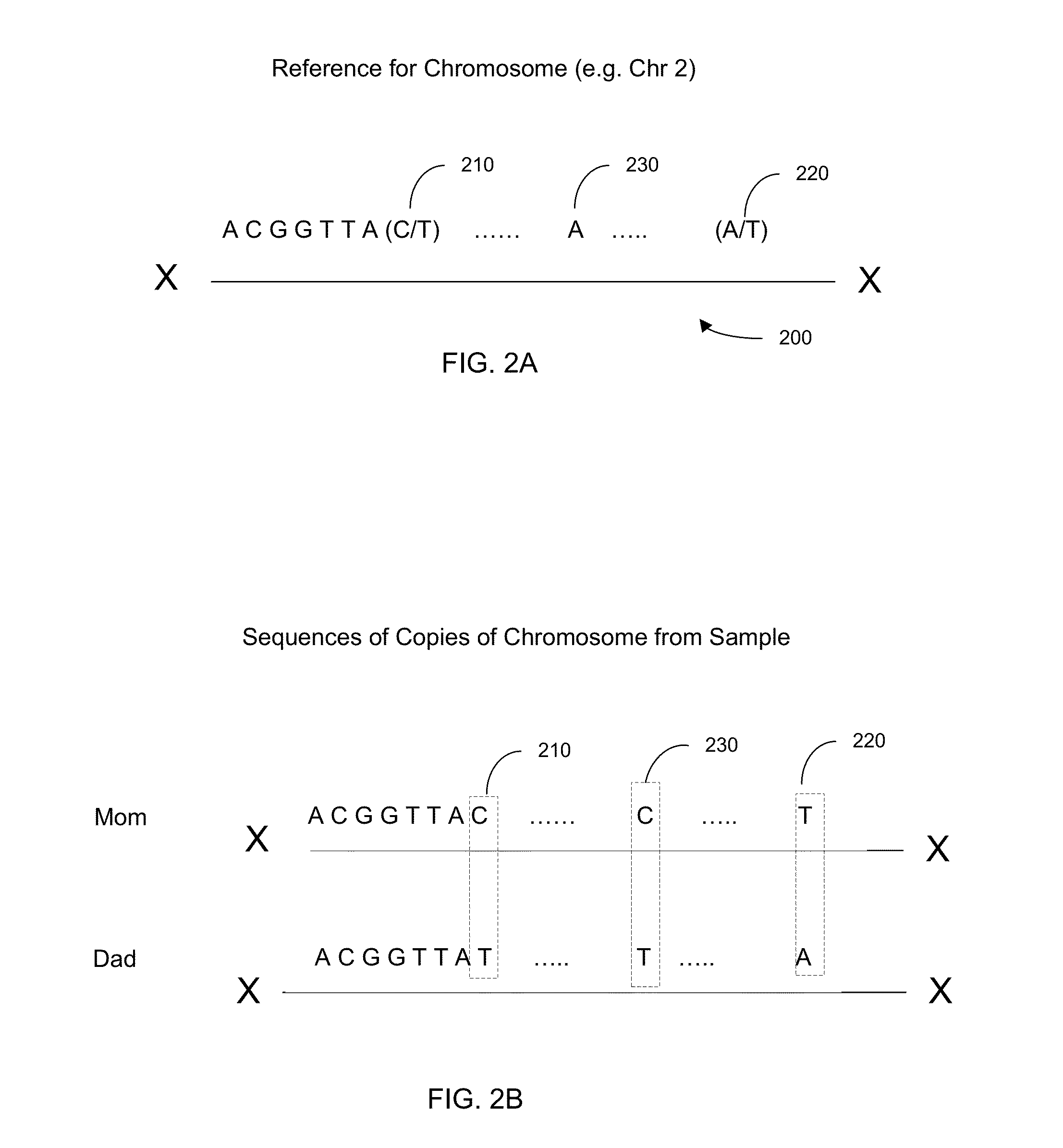Phasing of heterozygous loci to determine genomic haplotypes
- Summary
- Abstract
- Description
- Claims
- Application Information
AI Technical Summary
Benefits of technology
Problems solved by technology
Method used
Image
Examples
Embodiment Construction
[0048]Present method for determining a sequence of a chromosome are inaccurate, e.g., since many approximations are made. However, current methods for gaining accuracy are simply to perform extraordinary amount of sequencing operations. Accordingly, accurate and efficient methods of sequencing a genome from a biological sample are desired.
[0049]In some embodiments, locations in the genome where the genotype is known to be heterozygous can be used to determine the haplotype. The haplotype can be determined from an analysis that one allele on a first heterozygous locus is likely to be on the same haplotype as an allele on a second heterozygous locus. Such information can be used to define a connection between the two loci, with a particular orientation for which alleles are connected. Errors can be identified through redundant connection information. Additionally, a confidence value (strength) for a particular connection can be used to more easily identify errors. The connections amon...
PUM
 Login to View More
Login to View More Abstract
Description
Claims
Application Information
 Login to View More
Login to View More - R&D
- Intellectual Property
- Life Sciences
- Materials
- Tech Scout
- Unparalleled Data Quality
- Higher Quality Content
- 60% Fewer Hallucinations
Browse by: Latest US Patents, China's latest patents, Technical Efficacy Thesaurus, Application Domain, Technology Topic, Popular Technical Reports.
© 2025 PatSnap. All rights reserved.Legal|Privacy policy|Modern Slavery Act Transparency Statement|Sitemap|About US| Contact US: help@patsnap.com



